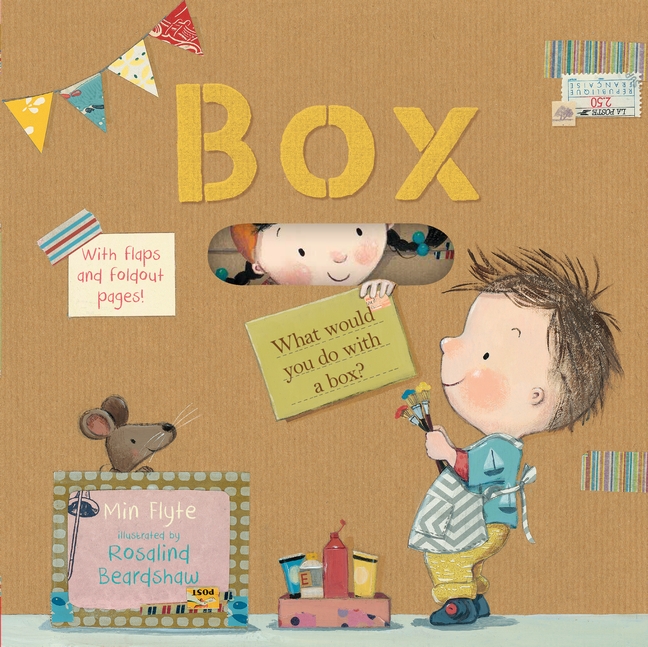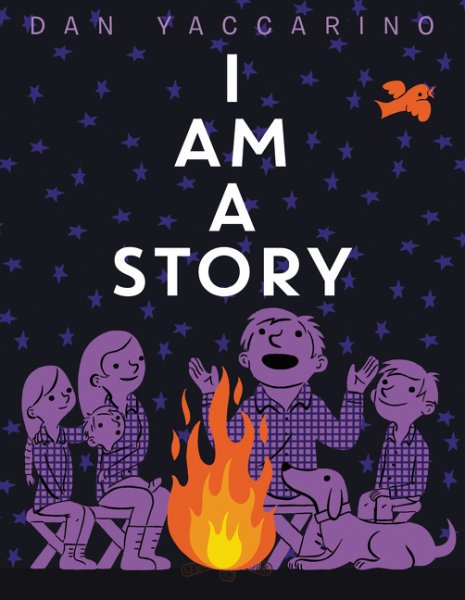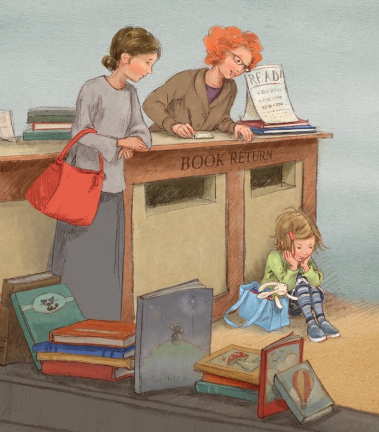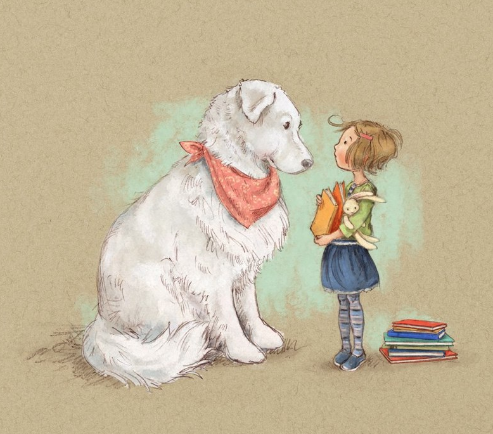new posts in all blogs
Viewing: Blog Posts Tagged with: Picture Books, Most Recent at Top [Help]
Results 51 - 75 of 7,833
How to use this Page
You are viewing the most recent posts tagged with the words: Picture Books in the JacketFlap blog reader. What is a tag? Think of a tag as a keyword or category label. Tags can both help you find posts on JacketFlap.com as well as provide an easy way for you to "remember" and classify posts for later recall. Try adding a tag yourself by clicking "Add a tag" below a post's header. Scroll down through the list of Recent Posts in the left column and click on a post title that sounds interesting. You can view all posts from a specific blog by clicking the Blog name in the right column, or you can click a 'More Posts from this Blog' link in any individual post.
She's five now and tomorrow is her party. I went to the bookstore and I was appalled to realize that my obsession with middle grade fiction has left me unfamiliar with current picture books. I managed. I bought Mo Willems' The Thank You Book. We are big Mo Willems fans, she and I. And then, because she is my granddaughter and I don't have to care about protecting her from commercialism quite as much, I bought her an I Can Read book about one of her favorite TV shows.
 |
| No, Mo, thank YOU!! |
You may be in a similar quandary as the frenzied gift-giving season arrives. All the FB posts and tweets are now counting down in days to You-Know-When.
Just in time!!! The New York Times Book Review has published the Best Illustrated Books of 2016 list. Hmm, it's not the best PICTURE books of the year, but, look, they all seem to be for children.
Here's the list. I am baffled to admit that I recognize only one title on this entire list.
Anyway, these may not be the best picture books but the artwork in each one is superb. If you have the luxury of giving the children in your life books they want to read AND books you want them to experience, well, do it!
Because of Thursday. Patricia Polacco. 2016. Simon & Schuster. 40 pages. [Source: Review copy]
First sentence: Thursdays had always been lucky for Annie Fetlock. She was born on a Thursday. She won her first cooking contest at the age of eight on a Thursday. She met the love of her life, Mario, on a Thursday. They were married on a bright Thursday afternoon, and their two children were each born on a Thursday. One in June and the other in July. It was actually on a Thursday that Annie and Mario opened their diner together. And it was on a Thursday that Annie made her signature creation. A splendid pasta salad.
Premise/plot: I'm tempted to say there are two kinds of people in the world: those who love Patricia Polacco, and those who don't. If you've read Polacco, chances are, you'll know exactly what I mean. Her picture books tend to be for older readers, have a LOT of text, and tell wonderful, heartfelt, emotionally compelling STORIES. Not every Polacco is a tear-jerker. But. More often than not, she gives readers stories and characters worth thinking about. She doesn't go for the quick laugh or the word pun.
Annie Fetlock is the heroine of Because of Thursday. The first two or three pages fly readers through the first sixty or so years of her life. And then, the story begins...
My thoughts: If you love cats, I think you HAVE to read this one. While the title could be "Because of Thursday" for a couple of reasons, I'm going to go with the CAT. I really love how Thursday (the cat) really, truly brought joy into her life again and changed all her luck, if you will.
Who else should read this one? If you love COOKING or EATING or watching the Food Network.
Note to everyone: DON'T FORGET THIS ONE FOR THE 2017 CYBILS.
Text: 5 out of 5
Illustrations: 5 out of 5
Total: 10 out of 10
© 2016 Becky Laney of
Becky's Book Reviews
Won Ton. Lee Wardlaw. Illustrated by Eugene Yelchin. 2011. 40 pages. [Source: Library]
First sentence: Nice place they got here. Bed. Bowl. Blankie. Just like home! Or so I've been told.
Premise/plot: Won-Ton (not his *real* name) is a shelter cat who's been adopted by a young boy. The book tells--in verse--what happens next. If you love cats, then this one is a real treat. For example:
Your tummy, soft as/ warm dough. I kneed and kneed, then/ bake it with a nap.
or
I explained it loud/ and clear. What part of "meow"/ don't you understand?
or
Sorry about the/ squish in your shoe. Must've/ been something I ate.
My thoughts: I do love cats. (Even though I'm allergic.) And this picture book alternates being cute and funny. I definitely enjoyed it.
Text: 4 out of 5
Illustrations: 4 out of 5
Total: 8 out of 10
© 2016 Becky Laney of
Becky's Book Reviews

Joyce Sidman and Beth Krommes have a way with creating meditatively beautiful books that make you slow down and think about the world around you. Their works are like the picture book equivalents of a deep, cleansing breath. With their newest book, Before Morning, they visit the magical world of a snow day. I say magical because, as a native Southern Californian, a snow day seems extremely exotic and unattainable, almost like getting to visit Santa's workshop or Dumbledore's office.
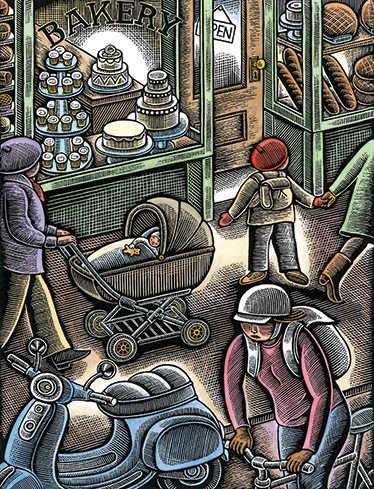
Before Morning begins with eight pages of illustrations that show us a mother and child walking home through a bustling city as night falls. Entering their apartment, we see the table is set for dinner, and parents are hugging, yet the look on the child's face is one of sadness. The final page of illustrations before the text begins shows the mother sitting on her child's bed saying goodnight. She is in a pilot's uniform and a book about Amelia Earhart is on the child's bed. It is time for her to go to work. A page turn reveals the words, "In the deep woolen dark, as we slumber unknowing, let the sky fill with flurry and flight." As an afterword from Sidman tells us, Before Morning is written in the form of an "invocation - a poem that invites something to happen, often asking for help or support." As the wonderful poetry of Sidman's text flows on, she asks that the "air turn to feathers, the earth turn to sugar," as she asks for snow to fall. We see the city dwellers cope as their world is blanketed in white and we see anxious, weary travelers at the airport, watching the snow fall out the windows as Sidman asks to let "urgent plans founder," and let "pathways be hidden from sight." As the story goes on, readers will realize that the invocation is from (or for?) the child wishing for the mother's return and having that wish granted. "Please - just this once - change the world before morning: make it slow and delightful . . . and white." The final illustrations show the family happily reunited and heading out into the newly white world for a day of sledding.

One thing I especially like about Krommes's scratchboard illustrations are the almost genderlessness of her characters, allowing readers to imagine a boy or a girl child awaiting her mother's return. I wish I lived in a snowy place and my kids were small again so that we could read Before Morning together, cozy in bed, on a night when snow has been promised, falling asleep and hoping to be greeted by a snow day in the morning - the gift of a pause in our busy lives. A deep, cleansing breath.
More books by
Joyce Sidman & Beth Krommes:
Source: Review Copy
How To Be A Good Cat. Gail Page. 2011. Bloomsbury. 32 pages. [Source: Review copy]
First sentence: Bobo was good. He liked to help. So when Mr. Hiccup asked Mrs. Birdhead if someone could look after his kitten, Bobo volunteered!
Premise/plot: Bonkers, the neighbor's kitten, IS very, very naughty. Bobo has quite a time trying to keep up with him. When Bobo stops treating him like a dog, and, instead seeks to learn ALL ABOUT CATS (from a cat), things improve. He learns how to sneak, how to chat, how to stretch, how to clean himself, how to climb...
My thoughts: I liked this one. Bonkers is quite adorable. A perfectly cute and sweet-looking gray and white kitten. Of course, readers learn that he's not quite as innocent as he appears. But it's fun to read about these two.
Do I love the illustrations? I can't say that I do. Oh, I definitely loved Bonkers, and how he's illustrated. Some quite expressive illustrations!!! But there is something about how Bobo is drawn--he's almost always, always on two legs instead of four. He doesn't look like a dog. He looks like a human in a dog costume. And that, for some reason, bothers me. Also, the cat who teaches Bobo how to act like a cat walks on two legs. And it's just unnatural looking.
Text: 5 out of 5
Illustrations: 2 out of 5
Total: 7 out of 10
© 2016 Becky Laney of
Becky's Book Reviews
 Last Year I enthusiastically reviewed the curiously out of the ordinary picture book Who Done It? by Olivier Tallec. Everything about Tallec's book was fun and funny. Tallec brings back the same cast of characters and more mysteries to be solved in his newest book Who What Where?
Last Year I enthusiastically reviewed the curiously out of the ordinary picture book Who Done It? by Olivier Tallec. Everything about Tallec's book was fun and funny. Tallec brings back the same cast of characters and more mysteries to be solved in his newest book Who What Where? With a spine on the horizontal, the format makes you lift the cover and hold the book in a different way, a way that lends itself to the story inside. Tallec's questions are not as easy to answer as they seem at first. Readers will pore over illustrations trying to figure out who chose the rug for a hiding place, who is looking in the mirror, who is playing ghosts and who jumped a little too much on the bed. The crime scene is at the top of the fold with the line up of possible perps below it. Tallec's bright palette and fantastic facial expressions on his humans and animals make Who What Where? a real gem. Be sure to find either or both of these books by Tallec and be ready to have a very fun time reading with your little one.
With a spine on the horizontal, the format makes you lift the cover and hold the book in a different way, a way that lends itself to the story inside. Tallec's questions are not as easy to answer as they seem at first. Readers will pore over illustrations trying to figure out who chose the rug for a hiding place, who is looking in the mirror, who is playing ghosts and who jumped a little too much on the bed. The crime scene is at the top of the fold with the line up of possible perps below it. Tallec's bright palette and fantastic facial expressions on his humans and animals make Who What Where? a real gem. Be sure to find either or both of these books by Tallec and be ready to have a very fun time reading with your little one.
Source: Review Copy
For many of us, talking to people we do not know is a very hard thing to do. Even when we really want to make friends, taking that step to connect with someone new seems almost insurmountable, especially if it takes us out of comfort zone and forces us to go somewhere that we are not familiar with.
Today's picture book beautifully captures the journey that a character takes when he has to leave the place he knows, to seek out something that he desperately needs.
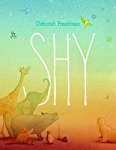 Shy
ShyDeborah Freedman
Picture Book
For ages
Penguin Random House, 2016, 978-0-451-47496-4
Shy is happiest when he is “between the pages of a book,” when he can go to “a land far away” and experience “once upon a time.” Shy particularly loves books about birds, where he happily reads about their beauty and their songs. The sad thing is that Shy has never heard real bird song because the birds in books cannot sing.
Then one day a little yellow bird flies by, a real bird that sings. Shy is delighted, and overwhelmed. He would love to talk to the bird but has no idea how to do so. What if he makes a mess of things, what if he makes a fool of himself, what if…
And then the bird is gone.
Shy so wants to follow the bird, but he has never left his safe little hiding place within the pages of books. He has never ventured out into the world. Though he is afraid, Shy leaves his home for the first time in his life and what he sees as he seeks out the bird amazes him. There are all kinds of animals, and there are birds, lots of birds. Shy hears the song of his bird and follows, and then comes that moment when he needs to speak, to connect with the bird, but Shy cannot get the words out and then…
The bird is gone again and Shy is alone once more.
Many of us find it very hard to venture away from the places that make us feel safe, the places that we are used to. If we are lucky, something comes along that pulls us out of our safe areas, and we enter a world full of marvels and possibilities, the most precious of these being friendships and connections with others. This remarkable picture book explores the journey a very shy character makes when something from the outside world touches him so such a degree that he has to follow; he has to leave the safety of his book for the sake of something wonderful.
By: Arbordale Publishing,
on 10/27/2016
Blog:
(
Login to Add to MyJacketFlap)
JacketFlap tags:
Special Days,
Featured Books,
bat facts,
Arbordale Posts,
bat books,
bat conservation,
bat habitats,
bat week,
Children's Books,
Halloween,
picture books,
Add a tag
It is Bat Week! Did you know that bats are needed to control pests, spread seeds, and pollinate plants? Scientists learn a lot about the welfare of bat populations based on the crops that they help grow. And on October 31st we may be spooked out by the nocturnal winged creatures, but did you know that they help make the chocolate in our trick-or-treat bags?
Bat week is all about helping conserve the more than 1,100 species that live on every continent except Antarctica, and Bat Conservation International has many different ways that you can help bats that live in your neighborhood. Check it out!
If you want to get the facts first, here is an Arbordale booklist that will make you go batty!
 Home in the Cave – by Janet Halfmann, illus. by Shennen Bersani
Home in the Cave – by Janet Halfmann, illus. by Shennen Bersani
Baby Bat loves his cave home and never wants to leave it. While practicing flapping his wings one night, he falls, and Pluribus Packrat rescues him. They then explore the deepest, darkest corners of the cave where they meet amazing animals—animals that don’t need eyes to see or colors to hide from enemies. Baby Bat learns how important bats are to the cave habitat and how other cave-living critters rely on them for their food. Will Baby Bat finally venture out of the cave to help the other animals?
 Little Red Bat – by Carole Gerber, illus. by Christina Wald
Little Red Bat – by Carole Gerber, illus. by Christina Wald
Red bats can hibernate or migrate to warmer regions during the winter. Should this solitary little bat stay or should she go? That’s the question the little red bat ponders as the leaves fall and the nights get colder! Some animals, such as the squirrel, tell her to stay. But what about the dangerous creatures that hunt red bats in winter? The sparrow and others urge her to go. But where? Carole Gerber takes young readers on an educational journey through one bat’s seasonal dilemma in Little Red Bat. Imaginative illustrations by Christina Wald give little red bat charm and personality, and children will be waiting and wondering what will happen next. Will the little red bat stay put or migrate south for safety and warmth?
 The Rainforest Grew All Around – by Susan K. Mitchell, illus. by Connie McLennan
The Rainforest Grew All Around – by Susan K. Mitchell, illus. by Connie McLennan
Imaginations will soar from the forest floor, up through the canopy and back down again, following the circle of life. The jungle comes alive as children learn about the wide variety of creatures lurking in the lush Amazon rainforest in this clever adaptation of the song “The Green Grass Grew All Around.” Search each page to find unique rainforest bugs and butterflies hiding in the illustrations. Delve even deeper into the jungle using sidebars and the “For Creative Minds” educational section, both filled with fun facts about the plants and animals, how they live in the rainforest and the products we use that come from the rainforest.
 Deep in the Desert – by Rhonda Lucas Donald, – by Rhonda Lucas Donald, illus. by Sherry Neidigh
Deep in the Desert – by Rhonda Lucas Donald, – by Rhonda Lucas Donald, illus. by Sherry Neidigh
Catchy desert twists on traditional children’s songs and poems will have children chiming in about cactuses, camels, and more as they learn about the desert habitat and its flora and fauna. Tarkawara hops on the desert sand instead of a kookaburra sitting in an old gum tree. And teapots aren’t the only things that are short and stout—just look at the javelina’s hooves and snout. Travel the world’s deserts to dig with meerkats, fly with bats, and hiss with Gila monsters! Whether sung or read aloud, Deep in the Desert makes learning about deserts anything but dry.
 And Coming in spring of 2017 Bat Count: A Citizen Science Story
And Coming in spring of 2017 Bat Count: A Citizen Science Story
by Anna Forrester, illus. by Susan Detwiler
Jojo is prepping for an exciting night; it’s time for the bat count! Bats have always been a welcome presence during the summers in the family barn. But over the years, the numbers have dwindled as many bats in the area caught White Nose Syndrome. Jojo and her family count the bats and send the numbers to scientists who study bats, to see if the bat population can recover. On a summer evening, the family quietly makes their way to the lawn to watch the sky and count the visitors to their farm.



By:
Cynthia Leitich Smith,
on 10/25/2016
Blog:
cynsations
(
Login to Add to MyJacketFlap)
JacketFlap tags:
illustration,
picture book,
diversity,
picture books,
young adult fiction,
dystopian,
Aboriginal,
Ambelin Kwaymullina,
author-illustrator,
Ambelin-Cyn series,
Add a tag
By
Cynthia Leitich Smithfor
CynsationsThe second of a four-installment dialogue with Ambelin and Cynthia. Our focus is on the creative life and process, speculative fiction, diversity, privilege, indigenous literature, and books for young readers.Yesterday, Ambelin spoke on ethics, the writing process and own voices. We have children’s-YA literature and the law in common. That’s actually a pretty common combination here in the states. Why do you think there are so many people involved in both?Well, I’ve had some of my law students suggest the law is so horribly dry that it drives people to being creative in order to escape its clutches (these are generally the students who are studying law because their parents thought it was a good idea).
But for me at least, I think the reason I studied law and the reason I write are the same. In both realms, I am seeking justice – and justice, in Aboriginal societies, generally equates to balance, not just between human beings but between all forms of life (and everything lives).
I write speculative fiction because I want to write about the possibility of defeating injustice; to write about the terrible things that were (and are) while imagining what could be.
The oppressive law I wrote about in the Tribe series divides people into three categories: those without an ability (Citizens); those with an ability (Illegals); and those whose ability is considered benign (Exempts).
This is not an invented law. It is based on the Western Australian Natives (Citizenship Rights) Act 1944, a piece of legislation that purported to offer Aboriginal people ‘citizenship’ by exempting us from racially-based restrictions that only applied to my ancestors in the first place because they were Aboriginal.
In the Tribe series, this law is ultimately defeated by an alliance of the marginalised and the privileged, and by a heroine whose power is to identify and sustain the connections between all life.
And in writing of connections, I am writing of something that is central to the law in Aboriginal legal systems where (at its broadest) law is the processes of living in the world that sustain the world.
You clearly articulate the impact of white privilege on writing and writers, noting the negative impact on the work of Native voices and POC voices. What would you say to those Native and POC writers who may find themselves angry, frustrated, hurt or discouraged by these dynamics?First: it’s not you. Exclusion is not something you are inventing in your head and you are neither unlucky nor unworthy.
It helps in this context to form connections with other Indigenous writers as well as with writers of colour, LGBTI writers, and writers with a disability.
You are likely to hear stories of authors getting similar comments across different contexts (e.g: you’re not writing to the Indigenous experience … this story is too Asian … gay books don’t sell … we’ve already published a ‘disability book’ this year).
It matters to have a network of people with whom to share both the good and bad experiences; and perhaps most importantly, to understand that you are not alone.
Second, never forget how to laugh. Some of the comments I’ve listed above have been part of the experience of other writers that they’ve laughed about with me – not because these comments are not discriminatory and hurtful, but because laughter has always been one of the ways in which marginalised peoples have dealt with pain.
Third, define success in your own terms. We all know what ‘success’ is supposed to be in literary industry terms: book sales and/or critical acclaim (preferably both). I’m not saying we shouldn’t aspire to that. But I also think that if marginalised writers define our success solely in the terms set by an industry that consistently privileges white, straight, cis-gendered people who don’t have a disability, we are also buying into an underlying lie.
The lie is that if we can just prove we are good enough we will be treated equally. But once equality has to be earned, it is no longer equality.
So I think it’s important that each of us define success according to what matters to us – and for me, it’s being a person that my ancestors would be proud of.
Book sales wouldn’t overly interest them. But honouring who they were, and who I am; treating cultural knowledge with respect; helping other Indigenous writers whenever and wherever I can – these are the kinds of things they’d be concerned about.
Fourth: be hopeful. I am. I locate my hope in people, and there are many, many people working towards a world in which all voices have an equal opportunity to speak and all stories are equally heard.
I think change will come, and in the meantime, I’m proud to be a part of a global community of voices, marginalised and privilege alike, that are speaking out for justice.
While you don’t feel it’s appropriate for non-Indigenous writers to reflect your community in first person or deep third, you are open to them writing secondary characters. Why does your opinion differ depending on how centered the character’s perspective is in the story? |
| Ambelin's desk |
I don’t think it’s appropriate for non-Indigenous people to speak as if they are Indigenous, especially given the operation of privilege which means that non-Indigenous voices will be heard in a way that Indigenous voices are not.
For me, writing from an ‘outsider’ perspective (so not in first or deep third) is to respect boundaries; to accept there are limits on what we can know of others and how we should represent others in our own work.
When I write of experiences of marginalisation not my own, I do it from an outsider perspective – reflecting that this is much as I can understand and that understanding may of course be wrong; I am not suggesting that I know what it is to see the world from an ‘insider’ view of a group to which I don’t belong. I think the spaces must be created for everyone to speak to their own worlds, and I want to be part of making those spaces a reality.
What advice do you have for non-Indigenous writers in crafting those secondary characters?I think something you’ve said is the best place to start – you’ve spoken of the need for writers to read 100 books by Indigenous people before writing about us.
I agree. No one should be writing an Indigenous character without being familiar with Indigenous stories (not the ones told about us but the ones told by us).
It’s also important to ensure that any stories people are reading are ethically published because there is a vast body of Indigenous stories that were taken by anthropologists and others and are now in the public domain without the informed consent (or sometimes even the knowledge) of the Indigenous peoples concerned.
The easiest way to check that a story is appropriately published is to see who holds the copyright; where Indigenous peoples hold copyright in their own stories it is at least some indication that they control the text.
In addition to reading stories, I’d say, become familiar with representation issues. Engage with the online dialogue happening around representation and children’s literature as it relates to Indigenous peoples. There are no shortage of voices speaking in this space.
And finally: words spoken about marginalised peoples have a weight and a cost. But if you are not a member of that group, then it’s a weight that you don’t carry and a cost that you don’t pay.
So don’t measure the impact of your words by how they will be read by people like you. Measure them by how they’ll be read by the people you’re writing about.
How did you learn your craft as a writer and illustrator?By doing! I have no formal training in writing or illustration. But nor do a lot of Australian Indigenous writers and illustrators, and we have been storytellers for thousands of years.
So to learn craft I look to the work of Indigenous writers and artists, both within Australia and elsewhere, as well as to the ancient teachings of my people.
What inspired you to direct your talents toward creating stories for young readers?In my YA series, I was writing about a superhero, so it had to be about a teenager. I don’t believe grown ups have it in us to save the world, because we are spectacularly failing to do so.
But in the young I see all the hope for the future – they are more interconnected, quick to embrace new ideas, and passionate about fighting anything they perceive as an injustice.
They’re also more honest, especially the children for whom I write picture books. When they like a book, they write me lovely letters telling me how they sleep with the book under their pillow and begging me to write more. When they don’t like it they’re equally forthright.
People ask sometimes whether its difficult as an author to deal with bad reviews, to which I say: try writing for six-year-olds. Every once in a while, children send me letters about one or the other of my picture books that begin something like this: “My teacher made me read your book. I didn’t like it.”
I’ve had a few of these letters that went on for ten pages or more, and since that length is like War and Peace from a six-year-old, it means I’ve had kids hate my work enough to send me the child equivalent of Tolstoy.
Adverse reviews from grown-ups are nothing in comparison.
What was your initial inspiration for The Tribe series?My brother Blaze. He came up to me one day and said, “I’ve got an awesome title for a book. It’s called The Interrogation of Ashala Wolf.”
I said, “That’s a pretty good title – what’s the story?’
To which Blaze replied, “Oh, there’s no story. Just the name, and I can’t be bothered writing it so I’m giving to you.”
Having bestowed the title of the novel upon me, he wandered off, leaving me to start thinking about the story. (And for anyone who’s read any of the Tribe series, the character of Jaz is very like my brother Blaze).
What were the challenges—literary, research, psychological and logistical—of bringing the stories to life?I think the primary challenge is this: in so many ways, I wasn’t writing fiction. A post-apocalyptic world is not a fantasy for Indigenous peoples; the colonial apocalypse has already happened and much of The Tribe series is drawn from Australian colonial history.
Much of it too is drawn from the experiences of my ancestors and that is why hope runs so strongly through the narrative. They held on to hope through hard, cruel times when all their choices were taken away from them.
Indigenous peoples are so often spoken of as victims and I certainly don’t wish to minimise the suffering and the multi-generational trauma inflicted upon us by the colonial project. But the very fact that the Indigenous peoples of the world survived determined efforts to destroy us demonstrates our great strength.
I think the ability to hold onto hope is part of that strength and its something I try to honour.
You’ve created several picture books with Sally Morgan. Could you tell us about your work together? |
| Ambelin with her creative family |
So, Sally is my mum. I’ve also done books with my two brothers, Blaze and Zeke, and the four of us have written together as a family. We’re all authors and artists, and we always give each other an honest opinion – sometimes this results in one of us storming off (usually me or Zeke, we’re both excellent stormers).
Generally, once we’ve had a chance to think about the criticism we come creeping sheepishly back and agree that yes, actually, that particular portion of the narrative (which we were previously so proud of) does indeed need more work.
I think from the outside our working process probably looks chaotic; we all talk at the same time and over each other; generally, the person with the best story gets to hold the floor until they get boring and someone else interrupts. If you want a place in the conversation in my family, you have to be prepared to earn it.
What can your readers look forward to next?I’m working on three YA novels right now, but the one I’ll finish first is a book I’m writing with my brother Zeke.
It’s a mystery with fantasy elements that’s told from the perspective of three Indigenous female protagonists. It’s been a difficult book to write in places because terrible things happen in it, but its ultimately a story about the power of young Indigenous women and how they find their way home.
So many of the world's problems arise because we think everyone thinks and sees things the way we do. We dare to think that they if they
don't see things our way, then they are in the wrong. We forget that who we are - our life experiences and our background - hugely affect our perceptions.
This amazing picture book shows us how different characters all see the same thing in very different ways. Their viewpoints are startling, visually, and give us cause to pause. As we look at the artwork we are gently reminded to think about how we perceive our world.
 They all saw a cat
They all saw a catBrendan Wenzel
Picture Book
For ages 5 and up
Chronicle Books, 2016, 978-1-4521-5013-0
A cat, wearing a red collar that has a little yellow bell attached to it, goes out into the world with its whiskers ready and its tail in the air. The cat is seen by a child, a dog, a fox, a goldfish, a mouse, a bee, a bird, a flea, a snake, a skunk, a worm, and bat. One would think that they would all see the cat in the same way, but this is not the case.
To the child the cat is a smiling, benign animal that is there to be patted. The dog sees the cat as a lean, mean looking creature. The goldfish, from its watery home in a fish bowl, sees a blurry shape with enormous yellow eyes. For the poor mouse the cat is a monstrous beast with yellow, slit eyes, huge claws, and sharp fangs. The bee, with its compound eyes, sees a pointillist cat, a vague figure made up of lots of colors. The bat, flying in the night sky, also sees a shape made up of dots, but the dots it sees are white in color.
Every animal sees the cat differently depending on its perspective and its place in the food chain. The kinds of eyes and senses they have also determine what the cat looks like to them. How does that cat see itself?
This wonderful picture book takes children on a journey into the imagination. It also presents them with the idea that different characters will see the same thing in widely different ways. We all view the world through eyes that are touched by our biases, interests, and backgrounds, and therefore we have to be sensitive to the fact that other people’s perceptions are not like our own.
Box by Min Flyte with illustrations by Rosalind Beardshaw is about one of my favorite things - boxes. Building cardboard box forts as a kid and for my kids, as well as smaller cardboard box houses for dolls and toys, is and long has been one of my favorite things to do. With Box, Flyte and Beardshaw have created a marvelous story and exploration that little listeners will love. Best of all, and crucial for a book in which boxes are the star, there are TONS of flaps to lift and boxes to peek inside! 
Unfortunately, I could not find any illustrations to show you just how fantastically the flaps compliment the illustrations and story so I'll just have to describe them. Thomas, Alice, Sam and Nancy each have a box. What is inside each box? A drum, a blanket, a tricycle and more boxes! Five flaps lift to reveal a toy mouse sleeping in a cozy little box. After the boxes are emptied, of course they need to be played with every bit as much as the things that were inside! Imaginations take off and castles, pirate ships and puppet theaters are created - all with flaps to lift. But wait, there's more! If you put all the boxes together you get a special flap that unfolds, like an accordion, to reveal a rocket ship! But wait - there's even more! A four page gatefold reveals one more creation, followed by tired out inventors and creators asleep - in a box, of course!
Source: Review Copy

Sometimes I will do a cold reading to a class of kids when I want to get a group opinion on a picture book. Occasionally, I will love a picture book that I read in the silence of my own home and it falls flat when I read it out loud to a group of kids. And vice versa. More than once I have not been moved by a picture book only to have the audience go crazy for it. I read Also an Octopus or A Little Bit of Nothing by Maggie Tokuda-Hall, illustrated by the marvelous Benji Davies (author and illustrator of Grandad's Island), out loud without even cracking the spine first, to two classes of kindergarteners and it was a hit - for all of us. Also an Octopus turned out to be a special treat for me because it is a book about story telling and how to tell a story, something dear to my heart. This is especially so since I became the librarian in a school where more than two-thirds of the student body are English language learners, less than two-thirds are reading at grade level and very few have the stamina to read a whole book (that is not a graphic novel). I am constantly talking to my students about story structure, the problem and solving the problem and Also an Octopus perfectly packs this lesson into a brilliantly and brightly illustrated picture book that is so fun to read. 
I was especially excited to learn that debut author Maggie Tokuda-Hall, a former children's bookseller and event coordinator at a well loved, independent San Francisco bookstore, was inspired to write Also an Octopus after repeated readings (out loud, for work) of Jon Klassen's I Want My Hat Back. When she asked herself, "Why is this book so good?" the answer she realized that it is the "perfect basic story, stripped down to the bare parts: Bear, quite simply, wants his hat back." This led Tokuda-Hall to begin writing a story about an octopus who wants to travel to far away galaxies but first, she realized, "Every story starts the same way . . . with nothing." 



Moving on from nothing, every story needs a character. How about an octopus who plays the ukulele? But, Tokua-Hall tells readers, "in order for it to be a story, and not just an octopus, that octopus needs to want something." Thus, the problem is identified and the main character can spend the rest of the story solving the problem! As you can see from Davies's wonderfully bright illustrations that pop with purples, yellows and oranges, there are many ways to solve this problem. Tokuda-Hall, who said she felt like she "won the illustrator lottery" when she was paired with Davies, felt that Davies not only shared her vision for this story but "made it so much better and cooler" with the strong sense of story that his illustrations embody. I couldn't agree more! The words and pictures are perfectly paired in Also an Octopus, with Davies's artwork bringing the crazy world embodied in the text to life.
Whether you are looking for a spectacularly illustrated picture book that is a delight to read out loud (or to yourself) or a tool to teach story structure and story telling to kids (or adults), Also an Octopus or A Little Bit of Nothing is a MUST.
Source: Review Copy
Dan Yaccarino has written a picture book that really speaks to me. I Am A Story tells the story of, well, storytelling, with the story as narrator. As Frank Viva writes in his review, it's "kind of a historical biography of storytelling." Yaccarino uses a bright, primary palette for his illustrations, with the colors evoking and connecting different time periods. I Am a Story is the perfect book for a librarian and teacher, especially for someone who works in a school where character education is a major pillar of our curriculum. I Am a Story solidifies my belief that stories connect us and form the foundation of a community, a culture. While words can divide us, I think that ultimately, story telling unites us.
Yaccarino begins his book, "I am a story. I was told around a campfire." From there we are off on a journey that visits the highlights (and some low points) of the varied and long history of storytelling. From carvings and pictographs to tapestries and illuminated manuscripts.
Yaccarino goes on to share the places where stories are discovered, from private to public libraries, biblioburros and Little Free Libraries. Stories are shared through the radio, and here Yaccarino shows a family around the radio, probably listening to The War of the Worlds. Another illustration shows movie goers enjoying Georges Méliès A Trip to the Moon. Television and computers are also shown as a way to share stories. Censorship, book banning and book burning are also addressed. Yaccarino ends I Am a Story with these wonderful words, "I've inspired millions. I can go with you anywhere and will live forever. I am a story."
Source: Review Copy
A little girl "reads" to her father at bedtime. "One mouse, two mouses, three mouses."
So begins my friend's new picture book, "Once, Twice, Thrice" by Kim Chatel. Like parents everywhere in the English speaking world, the father explains that when you add one mouse to another mouse, you get two mice. Are two houses called hice, then?
The father daughter duo explore other irregular plurals in this cleverly written and charmingly illustrated book. Artist Kathleen Bullock picks just the right color palette for a night time tale.
Besides being a sweet bedtime story, this book will be a winner in primary language arts classes and with ESL teachers.
Click here to get your own copy.
This week EMU'S DEBUTS has been celebrating the launch of Donna Janell Bowman's debut picture book, STEP RIGHT UP. It's a fabulous picture book biography about Doc and Jim Key and how they began the humane treatment of animals movement. Every day, a new post has been made to give insight into the creation of this wonderful book.
Today, Cynthia Levinson lets readers get to know some of the EMUS a little more closely by sharing stories and pictures of their own pets. I've always said that behind every great author there's a cat (or dog or horse or some furry, finned or feathered creature!). Enjoy Cynthia's post here!

Head on over to
The Little Crooked Cottage for some more art and talk about the inspiration and process behind
Charles Darwin's Around-the-World Adventure! (And check out the rest of the blog. Those ladies know how to rock the kids books!)
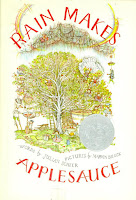 Imagine a City is the gorgeously unforgettable picture book by Elise Hurst that reminds me of a childhood favorite, Rain Makes Applesauce, a 1964 Caldecott honor book by Marvin Bileck and Julian Scheer. Imagine a City begins with a gentle voice inviting readers to, "Imagine a train to take you away / Imagine a city and drops of rain / A world without edges / Where the wind takes you high."
Imagine a City is the gorgeously unforgettable picture book by Elise Hurst that reminds me of a childhood favorite, Rain Makes Applesauce, a 1964 Caldecott honor book by Marvin Bileck and Julian Scheer. Imagine a City begins with a gentle voice inviting readers to, "Imagine a train to take you away / Imagine a city and drops of rain / A world without edges / Where the wind takes you high."Hurst's illustrations are rooted in reality, but the world she creates is filled with magic and wonder. And there are little details everywhere to be discovered, including nods to great surrealist painters like Rene Magritte, as seen in the illustration below.
Imagine a City is a book that is perfect for sending little listeners off into dreamland, but also a marvelous springboard for imagination. The next rainy or snowy day, be sure to pull this book off the shelf and inspire your children to create their own "world without edges."
Source: Review Copy
Donna Janell Bowman's debut picture book is out! STEP RIGHT UP: HOW DOC AND JIM KEY TAUGHT THE WORLD ABOUT KINDNESS is a beautiful story about the relationship between a man and a horse and how that relationship began the humane movement.
Read an interview with Donna Janell Bowman here and an interview with her editor here.
Want to buy the book? Visit it on
Amazon.

I really like cryptids. They are a universal creation, from the Mongolian Death Worm to the Scottish born Loch Ness Monster to the Chupacabra of Mexico, every culture seems to have a mythical creature that some people believe is not mythical. And, because they are (probably?) mythical, authors and illustrators are free to give cryptids any kind of personality traits and back story they want. Finally, with Brittany R. Jacobs's new picture book, The Kraken's Rules for Making Friends, this fantastic cryptid is getting attention that unicorns, Big Foot and the yeti have been monopolizing.
Jacobs has a great take on the trouble with being a kraken, most notably the challenge of making friends. When you are a giant squid, this just doesn't come easily. The kraken tries to be more approachable by knitting a koi fish costume that doesn't fool anyone.
The kraken seeks out advice from the great white shark who, oddly enough, seems to be a pro at making friends. The kraken follows all of the shark's rules, but still no joy. Finally, the kraken realizes that there is one fellow who he can bond with, and a chum is made.
Jacobs's illustrations are cinematic and cartoonish at the same time, which makes for a very animated story. Her palette is limited but lovely. Best of all, Jacobs manages to make a giant squid cute and even cuddly and very expressive. I can't wait to see what cryptid or creature Jacobs takes on next!
Soure: Review Copy
The imagination is a powerful thing. Indeed, if people did not have an imagination many books, pieces of music, and art would never be created. Today's picture book celebrates the imagination in a unique and exciting way. Readers of all ages may find themsleves wishing that they too could create a city, through their imagination, that is like the one that they visit in this title.
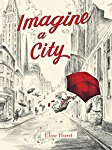 Imagine A City
Imagine A CityElise Hurst
Picture Book
For ages 5 to 7
Random House, 2016, 978-1-101-93457-9
Imagine if you can what it would be like to get on a train, a train that is going to take you to the city so that you have a special outing. It is an ordinary train that stops at an ordinary train platform. You get on board and off you go. It is not long before a waiter comes around and serves you a luscious tea. You sit on the comfortable seats sipping hot tea and eating delicious little cakes and treats. Perhaps you notice that one of the passengers in the car has rather long ears, and paws instead of hands. Or perhaps you don’t.
When you get to the city ordinariness disappears. Here humans and animals live side by side, and there are many strange and wondrous things going on. The pictures in a gallery that you visit refuse to be contained by their frames. Here the buses are fish instead of machines and they swim through the sky above the streets. Here the stories in books, like the pictures at the gallery, will not lie down quietly on the paper. Instead they hop off the pages and sometimes you get quite a shock!
When you stop for a bite in a little restaurant you find that the tables and chairs are little trees. In addition to the now no longer unusual assortment of animals, there are gargoyles partaking of drinks and snacks. It is important to remember that when you can imagine a city there is no accounting for what might happen.
In this visually stunning picture book, the author takes us on a journey full of wonderful impossibles and glorious imaginings. A minimal, lyrical text accompanies the art, and together they capture the sense of a place where adventures lie around every corner and where “The World is your teacher.”
This celebration of the imagination will delight readers of all ages, many of whom will wish that they could jump into the pages and visit the land that lies therein.
We Found a Hat by Jon Klassen is the final book in what has come to be known as the Hat Trilogy. While not the ending I might have anticipated or hoped for, it IS a very satisfying and perfect finale to what are possibly the two funniest, smartest, best picture books I have read. 
I don't want to give away the plot because, as with all books in this trilogy, it is a delight to discover on first read. But, I can tell you that We Found a Hat is the story of two turtles who both look really good in the hat that they find in their sparse desert landscape. I Want My Hat Back and This Is Not My Hat (which I didn't review because I was working for Klassen's agent when it came out) and We Found a Hat all deal with envy - hat envy, to be specific. Klassen takes a different approach to this envy in this new book in a way that solidifies his status as a superb author and illustrator.
The book trailers for all three books in the series, especially We Found a Hat, with Burl Ives singing Home on the Range in his sonorous, rich voice, are fantastic. I'm assuming that anyone reading this review is familiar with the Hat Trilogy, so enjoy this walk down memory lane!
Source: Review Copy
Hooray for Today! Brian Won. 2016. HMH. 40 pages. [Source: Review copy]
First sentence: "I'm wide awake and ready to play!" said Owl. "This will be a good, good day."
Premise/plot: Owl is ready to start the day. The problem? Owl's "day" is actually night. And all of Owl's friends are asleep--or about to asleep. Owl is frustrated and sad that no one wants to PLAY.
My thoughts: I liked this one. I didn't like it the first time I read it, however. I needed to meet Owl and friends properly by reading Hooray for Hat! Once I got 'attached' to the characters I went back to read Hooray for Today and liked it much, much better. My advice? Read both books.
Text: 3 out of 5
Illustrations: 3 out of 5
Total: 6 out of 10
© 2016 Becky Laney of
Becky's Book Reviews
Little Bot and Sparrow by Jake Parker is a sweet, quiet picture book that got me a little choked up at the end. In fact, Parker's book thematically calls to mind picture book author and illustrator Peter Brown's debut children's novel, The Wild Robot. Great minds do think alike...

Little Bot and Sparrow, which has a fantastic book case showing the blue prints for Little Bot on the front and Sparrow on the back, begins its story on the title page where we see a space ship flying over a snowy landscape and jettisoning something. That something is Little Bot, who is "thrown out with the garbage" when he isn't needed any more. Alone in a new environment, he tries to make friends with a flock of birds. All but one fly off in fear. Curious, a sparrow watches and eventually befriends Little Bot, seeing that he just needs to be "taken under her wing." Sparrow teaches Little Bot about the world around him, and he is a quick learner. When he questions her about why she needs to sleep, she replies, "To rest and to dream." Not needing to sleep and not knowing what it means to dream, Little Bot decides that it is best left to the birds.

As winter approaches, Little Bot knows that it is time to say goodbye, and he does so with a tear in his eye. He watches her fly off with her flock until she is only a "tiny dot in the sky," then he wanders past places they explored, wondering if she is safe. That night, Little Robot closes his eyes for the first time. And he dreams.
Little Bot and Sparrow can be read and enjoyed on more than one level, making it even more meaningful. Parker's illustrations are absolutely gorgeous, with a soft edge that echoes the story. Scenes from the natural world are often filled with humor and playfulness, while Little Bot is presented as almost human in form and never threatening. That glimpse of the space ship on the title page made me want to know more about the world that Little Bot came from. Maybe next time?
Source: Review Copy
Madeline Finn and the Library Dog, written and illustrated by Lisa Papp, is a marvelous picture book that hits a lot of sweet spots for me. But, what first drew me to Papp's book is her illustration style, which reminds me of the wonderful Holly Hobbie. Papp's soft pencil sketches are enhanced by a muted palette and created on paper with visible fibers. She creates an inviting world right away, even in it is a prickly world for Madeline Finn, at first anyway.
Madeline Finn does not like to read. Not books or magazines of "even the menu on the ice cream truck." Decoding is hard for Madeline and she is tired of getting a "Keep Trying" heart sticker instead of a star sticker like everyone else in her class. But things change when Madeline gets a very special opportunity at her public library.
Mrs. Dimple, the librarian, leads Madeline to a room filled with dogs and kids reading to them! She picks Bonnie, a beautiful dog like a "big, snowy polar bear." Soon enough, Madeline is reading to Bonnie, not worrying about her mistakes and feeling better about reading, happy to try those hard words over and over. Just when Madeline is ready to read out loud in class, hoping to get in one more practice session with Bonnie, Bonnie and Mrs. Dimple are not at the library!
America being read to in my library
There is a happy ending for Madeline and Bonnie, one that means there will be even more dogs for kids to read to at the library. Papp tells Madeline's story with a simple sweetness and I love that she has written a book about a real thing - kids practicing reading with dogs! There are more than a few organizations that provide this service, in fact there is even a dog named America that visits my school from time to time to give the kids practice reading and it is a truly magnificent thing to witness.
Source: Review Copy
There is always room for a pirate picture book, especially one like Beth Ferry's Pirate's Perfect Pet, brought to life by the painterly illustrations of Matt Myers. Pirate's Perfect Pet begins with Captain Crave taking a dive off plank of his pirate ship when he spies a bottle with a message in it bobbing near a shark. No problem! Back on board, the Captain unfurls a letter from his Mummy, praising his piratical skills and sharing an article found in Be Your Best Buccaneer magazine. This article just happens to include a checklist to make sure you are living up to your perfect pirate potential as a captain. With the help of his crew, Captain Crave ticks off items on the list, only to discover he is missing a peg leg. And a pet.


Scurrying to set this right, the crew docks in a place that looks quite a bit like Miami Beach. Myers's illustrations are richly detailed and full of laughs. From the beach to the farm to the zoo, Captain Crave just can't find the perfect pet, although he does get his peg leg after a visit with a lion.
 His quest ends in a pet store when something poops in his eye. A parrot with an eye patch and a peg leg? Yep! The pirate's perfect pet.I thought the story could have gone in a different direction, but that's just me. Give the people what they want, and who doesn't want a pirate to have a parrot?
His quest ends in a pet store when something poops in his eye. A parrot with an eye patch and a peg leg? Yep! The pirate's perfect pet.I thought the story could have gone in a different direction, but that's just me. Give the people what they want, and who doesn't want a pirate to have a parrot?
Source: Review Copy
View Next 25 Posts




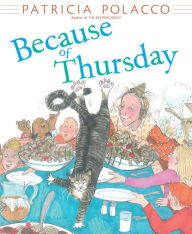






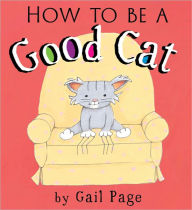
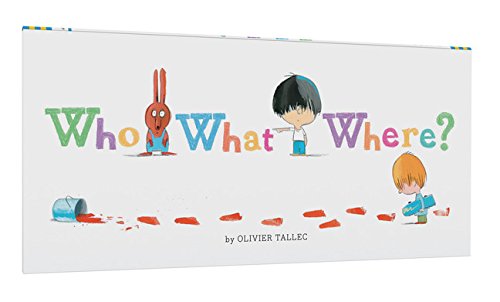




 Home in the Cave – by Janet Halfmann, illus. by Shennen Bersani
Home in the Cave – by Janet Halfmann, illus. by Shennen Bersani Little Red Bat – by Carole Gerber, illus. by Christina Wald
Little Red Bat – by Carole Gerber, illus. by Christina Wald The Rainforest Grew All Around – by Susan K. Mitchell, illus. by Connie McLennan
The Rainforest Grew All Around – by Susan K. Mitchell, illus. by Connie McLennan Deep in the Desert – by Rhonda Lucas Donald, – by Rhonda Lucas Donald, illus. by Sherry Neidigh
Deep in the Desert – by Rhonda Lucas Donald, – by Rhonda Lucas Donald, illus. by Sherry Neidigh And Coming in spring of 2017 Bat Count: A Citizen Science Story
And Coming in spring of 2017 Bat Count: A Citizen Science Story






